|

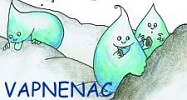 
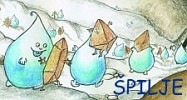
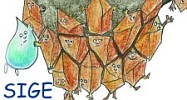
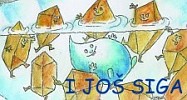
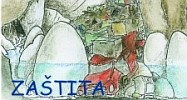

|
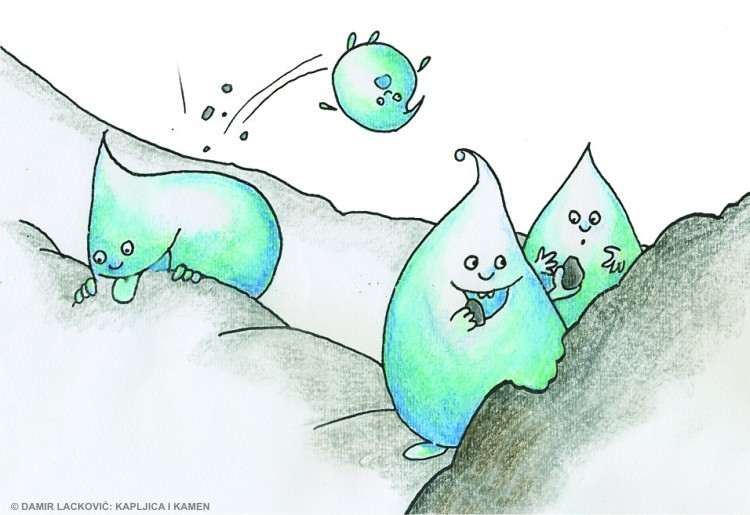
When acid rain falls on limestone, droplets start
licking and chewing on the stone. “Yum, this is
tasty!”
Did you know?
Millions of years ago limestone was sand on the bottom
of a shallow warm sea. In time, the grains of sand
were glued together into the hard limestone rock, which
was later pushed upwards to form mountains. Almost
the entire Adriatic coast and the mountains of Velebit,
Biokovo and Dinara are made of limestone.
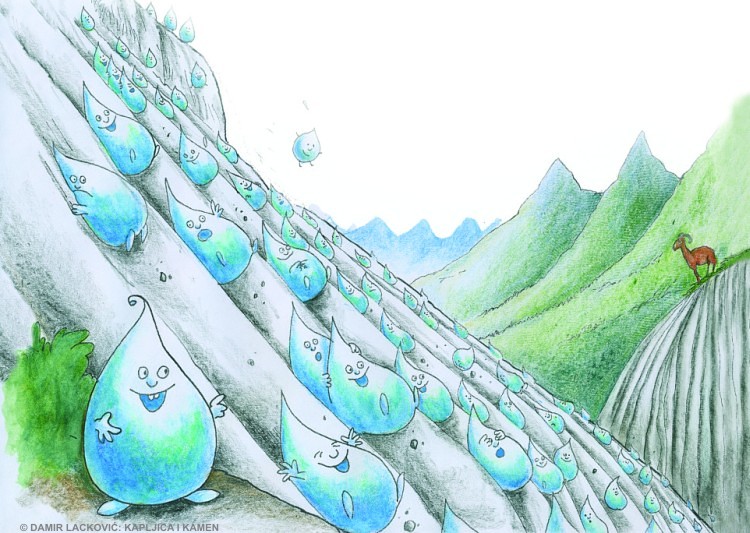
“This is fun!” yell the droplets as they slide down the
rocky limestone slope, rolling, tumbling and slowly
chewing on the stone.
And
so, thousands of droplets over many years carve grooves
called karren. But, where did the other droplets
go?
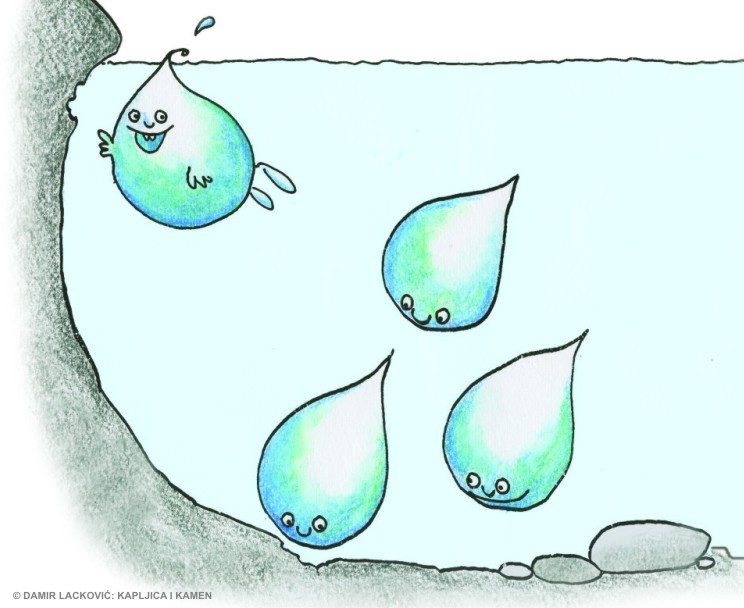
Rain drops that fall on a flat stone surface, little by
little, bite by bite, make small holes in the stone.
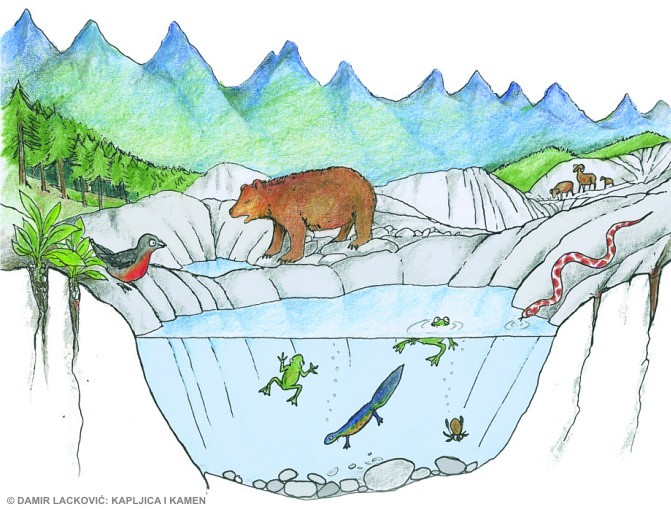
After much rain and many years, such small holes become
pools that store precious rainwater. These pools
are called kamenitzas or karst ponds. Animals, as
well as people, drink water from them. Frogs lay
their eggs and salamanders rest in karst ponds.

|